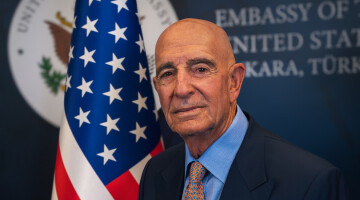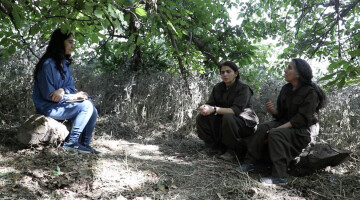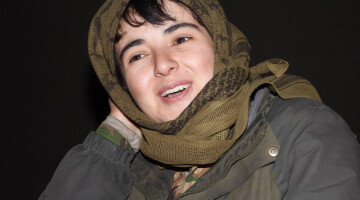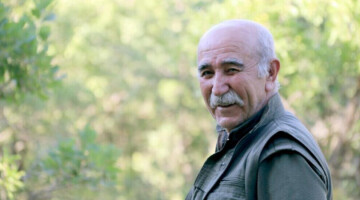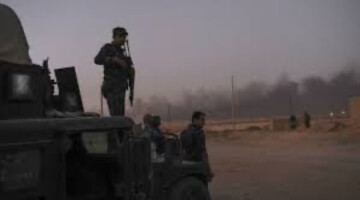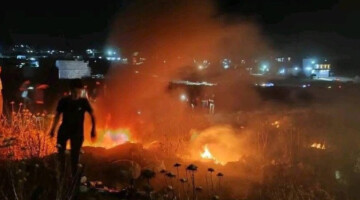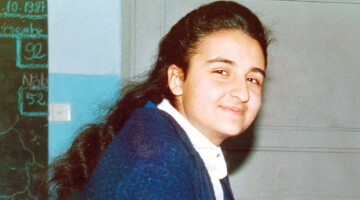The Islamic and Turkish state doctrine laid down in the constitution of the Turkish Republic of 1924 was not accepted by the Kurds without resistance. The uprising that broke out on February 13, 1925 in Amed (Diyarbakir) under the leadership of the Kurdish Sunni clergyman Şêx Seîdê Pîran (Sheikh Said) started numerous Kurdish rebellions after the end of World War I, which followed the process of the Turkish nation-state formation after the fall of the Ottoman Empire and were directed against the denial of the Kurdish existence, the entry of political autonomy and the fascist policy of Turkification.
On 29 June 1925 Şêx Seîd and his companions were executed, but the Ararat uprisings began the following May. At that time, however, the Turkish government had already established its systematic approach to the Kurdish resistance with its "Reform Plan for the East" (Şark Islahat Planı). Under the cloak of a state of emergency, this plan provided for assimilation measures, including deportations, resettlements and mass murders. With this plan, the Kurdish question was subordinated to the military, which is still noticeable to the near present. What we call the Kurdish question today was created during these years.
Three uprisings on Ararat
The first Ararat uprising failed in 1926 due to its regional limitation and lack of preparation. The second one lasted from 1927 to 1930. In contrast to the first rebellion in the Ararat region, this uprising was the first time that the idea of the unity of all Kurdish groups with the aim of an independent state came up, but it cost many victims and ended with the flight or execution of its leadership.
The third and last Ararat uprising took place in 1930. In the meantime, the Kurdish independence movement Xoybûn, founded in 1927 in Lebanon by intellectuals and feudal lords, had declared its intention to support the uprising. To this end, it sent the former Ottoman officer Ihsan Nuri Pasha, who became the general of the uprising. The partisans led by him conquered an area north of Van on the border with Iran and Bitlis. But in the summer of 1930, 80 Turkish fighter jets and two army corps crushed the independence movement in the Zilan valley in Erciş.
Up to 55,000 dead
90 years later, it is still unclear how many victims the crushing of the last Ararat uprising on 13 July 1930 claimed. According to Cumhuriyet, the most widely read Turkish daily newspaper in the 1930s to 1940s, about 15,000 people died. According to survivors and participants of the uprising, up to 55,000 people were killed in a cruel way: Villagers were tied together and shot with machine-gun fire, people beaten to death and scalped, and pregnant women with their bellies ripped open. However, most of the victims were riddled with machine guns from the Soviet Union. The USSR was then the main supplier of weapons to the Turkish Republic led by the founder of the state, Mustafa Kemal Atatürk. For the Turkish newspapers, especially Cumhuriyet, the Kurds were "like the savages of Africa", "cannibals", "bandits" and a "plague on the Turkish race"; the newspapers celebrated the massacre of the Kurds. A few years later, this massacre was to be surpassed: in 1937 and 1938 in Dersim.
Villages burned to the ground after "cleanup"
After the "purge" in the Zilan valley, as the Turkish Republic called the massacre, the property of those killed was handed over to Kurds loyal to the government. Subsequently, at least 60 villages were burned to the ground. According to the Berliner Tageblatt, the Turks even destroyed 220 villages in the Zilan area. The entire area around the valley was confiscated by the state, and years later Kyrgyz and Afghans were settled in some villages that had not fallen victim to the destructive frenzy of Atatürk's soldiers.
Traces of the massacre disappear under dams
In 1992, after almost 14 years of construction, the Koçköprü dam was opened in Erciş. With the flooding of some villages in the Zilan valley, countless mass graves were flooded. Now, in the shadow of the Coronavirus pandemic, the construction of four hydroelectric power plants has resumed in the valley - despite a court order to stop construction. This would mean that all mass graves with the remains of thousands of people killed in the Zilan massacre in 1930 would disappear into reservoirs. The genocides of the past are to be covered up by new crimes and people and environment in Kurdistan are to be destroyed. The country governed by Erdoğan remains true to its role as a conflict generator once again.
RELATED NEWS:


